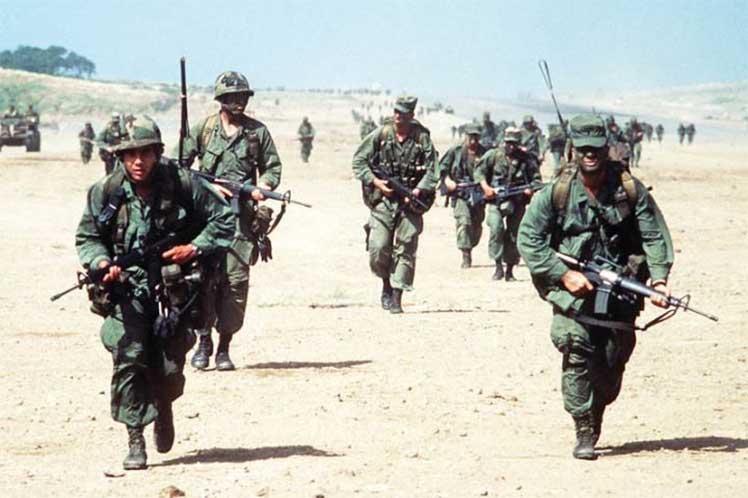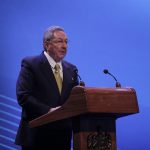The repeated threats of aggression from the United States against Venezuela are reminiscent of the ‘Urgent Fury’ military invasion of the tiny Caribbean island of Grenada 37 years ago. That was then considered the largest military action since the Vietnam War (1955-1975), Prensa Latina publishes.
Almost four decades later, the United States Southern Command carries out an extraordinary deployment of troops, ships and planes in the Caribbean that puts at risk not only the stability of the Venezuelan government, but the entire Caribbean region, declared a ‘Zone of Peace’ by their rulers in 2014.
The current actions of the Donald Trump administration are similar to those of President Ronald Reagan, obsessed with the revolutionary process in Grenada.
Both used pretexts and “false news”, such as the possible military use of an international airport, the alleged fight against drug trafficking or the rescue of US citizens supposedly in danger.
These policies include sustained media campaigns to discredit the authorities, measures to curb economic development, terrorist actions and the attempted assassination of their leaders.
In June 1980, a powerful bomb exploded under the stage where popular Grenadian leader Maurice Bishop was speaking, killing two girls and injuring dozens.
After the outbreak, Bishop denounced the terrorist act and reaffirmed: ‘We are against the exploitation of our resources for the benefit of a minority of transnational corporations and their allies. … This Revolution has room for all patriots who are willing to put an end to exploitation. That is why our country is under attack”, he added.
Before and after Granada, the United States military intervened in dozens of Latin American countries under the so-called Monroe Doctrine -updated as its National Security Doctrine-, which is rejected in the region for directly attacking its sovereignty and independence.
In the case of Grenada, more than 8,000 US troops occupied the island of about 100,000 inhabitants, by air, sea and land on October 25, 1983, six days after the murder of Bishop and some of his collaborators by a faction divisionist of the local Army.
Bishop (1944-1983) had headed the 1979 overthrow of the repressive Eric Gairy regime, supported by Washington.
Bishop himself denounced several times that the United States was preparing an attack on the island and, even, that it had secretly rehearsed it on the Puerto Rican island of Vieques, under the name ‘Plan Pirámide’, which consisted of smear campaigns in the regional and international media.
In addition, it included the application of economic destabilization measures and a set of covert operations to physically eliminate Grenadian leaders.
Apart from the test in Vieques, a plot called “Ámbar y las Ambarinas” was carried out, framed in the US exercises ‘Ocean Venture 81’, in reference to Granada and its adjacent islets (Carriacou and Petit Martinique).
The script for these maneuvers falsely indicated that the small Caribbean island, considered by international tourists as a heavenly space of peace, exported terrorism and allowed the kidnapping of some US citizens.
Earlier, Bishop revealed conspiracies in the United States to hire mercenaries in armed attacks against his government, one of them, called ‘Tomorrow’, after the name of one of the boats in which the attackers would travel from neighboring islands, was frustrated by financial discrepancies.
In fact, from the first month of the popular victory, the White House considered applying a rigorous naval blockade to Granada, but for tactical reasons postponed the aggressive measure.
Scholars of the Grenadian process coincide in pointing out the repetition, until today, of the same subversive methods used now against popular governments such as Venezuela and warn that secret military operations in neighboring countries are added to this.

Redacción Digital
Equipo de redactores del sitio web de Radio Mayabeque



